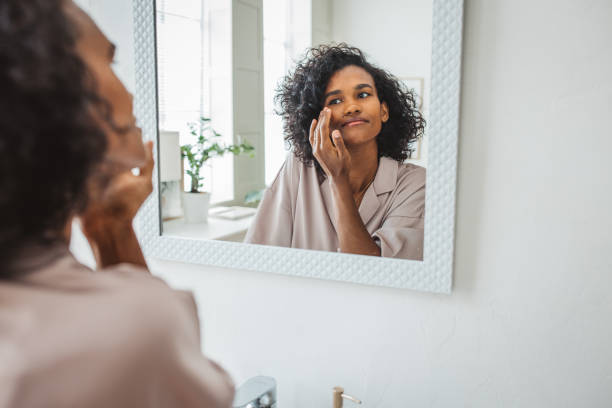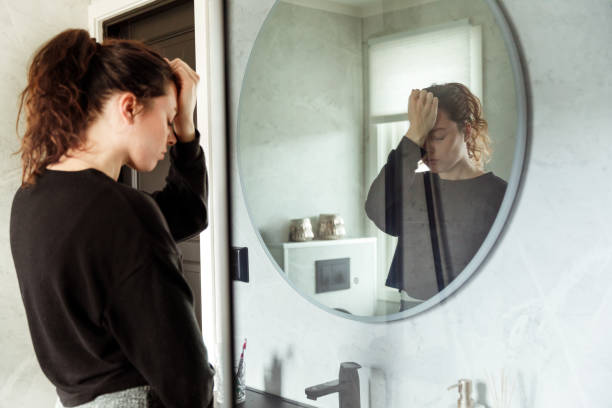Understanding Body Dysmorphic Disorder (BDD) starts with realizing it’s more than just being self-conscious. While many people occasionally worry about their appearance, BDD is an overwhelming and persistent preoccupation with perceived flaws—often flaws that others don’t notice at all. It can deeply affect how someone feels about themselves and how they interact with the world. As a BDD Counselor in Woodland Hills, I identify, diagnose, and treat Body Dysmorphic Disorder, so I know what it is and what it is not.

What Is Body Dysmorphic Disorder (BDD)?
Body Dysmorphic Disorder is a mental health condition where a person becomes fixated on one or more perceived defects or flaws in their appearance. These concerns can feel so distressing that they interfere with daily life. Despite reassurance from others, the person often struggles to believe they look “okay” or “normal.”
Signs and Symptoms of BDD
- Preoccupation with perceived flaws (which are minor or not observable to others), such as the shape, appearance, and/or size of body parts, which can include anything from whole limbs like legs to pore size.
- Excessive grooming utilizing mirrors, makeup, and hairstyling. This can include skin picking or other compulsive attempts to adjust perceived flaws.
- Frequent mirror checking or avoidance of mirrors entirely can happen, either because of a persistent need to see how their appearance is, or in fear of what will be seen.
- Comparing appearance to others frequently, whether these are people in their circle, prominent figures, or both. This comparison may be said aloud, or it may be a private thought.
- Seeking constant reassurance about looks from others, not believing what they are told, and feeling the need to ask again or push back.
- Believing others are mocking or noticing their “flaws” regardless of what the actual situation is.
- Avoidance of social situations or being seen in public because of a deep insecurity about appearance and fear of judgment.
- In severe cases, pursuing unnecessary cosmetic procedures despite being advised not to, financial restrictions, or any experienced dissatisfaction with the outcome.
How Is BDD Different from Normal Self-Consciousness?
Most people experience insecurity about their appearance from time to time. BDD, however, is far more intense and intrusive:
- Time Consuming: People with BDD can spend hours each day obsessing about their appearance. The intrusiveness of BDD can mirror that of obsessive thoughts in OCD.
- Distress and Impairment: The distress leads to avoidance of important activities—school, work, relationships. It has a major detrimental impact on your everyday habits.
- Delusional Thinking: Some individuals believe so strongly in their perceived defects that they’re convinced it’s a fact, not just a feeling.
- Persistent Suffering: These worries don’t fade with reassurance or time, and they often get worse without support.

2 Things You Can Do Today to Better Manage Your BDD
It is essential to take a hands-on approach to managing your BDD. Having a handle on your obsessive thoughts and their resulting behaviors can take time and focus, but is possible with consistency.
1 – Limit Mirror Checking
Mirror checking can include any kind of body checking, including taking photographs or videos, or setting up in front of a front-facing camera and observing yourself. Fixating on your image, however you manage to view it, is only going to feed your anxiety.
- Set specific times (or limits) to look in the mirror each day. While people’s routines for getting ready can vary in duration, most people do want to make sure they get the sleep out of their eyes and there’s no food stuck in their teeth before leaving the house. You may set a limit that you will look in the mirror only when getting ready to go out, and also give yourself a time limit for that process. The rest of the time, you may choose to cover mirrors or take down any that are unnecessary while you are learning to reduce your mirror time.
- This process doesn’t happen all at once. Start by reducing how often you check, and try to avoid close-up inspections. With our societal obsession with perfection, we can find ourselves right up close to the glass, or using a magnifying mirror, looking for errant hairs, discoloration, or skin texture we don’t like. If you typically check the mirror twenty times per day, with at least one session of close-up inspection, you may decide to reduce the number of times by one per day until your schedule feels manageable. If you have to (and your schedule is predictable enough), set an alarm for when you are “allowed” to check the mirror so that you don’t have to find a way to keep count as you go.
- When you are using mirrors, give yourself help and support. Use sticky notes on mirrors with reminders like: “I am more than my reflection.” Set a timer if you need to, whether it’s a time to be done by, or a reminder to step away for a moment and give yourself a break from your reflection. Dimming lights can help when possible, as well. It is much harder to focus on perceived imperfections when they aren’t under blinding light. Use a nightlight or candles if you don’t have a dimmer on your switch.

2 – Practice Mindful Self-Compassion
We can be our own toughest critic, and the thoughts we think about ourselves can be the hardest to overcome. Those who see us for BDD therapy in Woodland Hills find that showing themselves kindness is a helpful idea in theory, but they benefit from practical steps they can take in order to put that goal into action.
- When you notice harsh thoughts about your appearance, pause. In our Woodland Hills BDD therapy sessions, we practice paying special attention to the situations surrounding our distressing thoughts. In pausing, you are able to take note of where you are, who you are with, what you are doing, if your body needs (warm enough, not hungry, rested, etc.) are met, what just happened, and more clues as to why your anxiety and negative self-talk might be rising. While the thoughts may persist in your pause, taking control of the situation will empower you to cut them off and redirect yourself appropriately.
- Ask yourself: Would I talk this way to a friend? The answer to this question is almost invariably “no.” We tend to be much harder on ourselves than we would be on a loved one; in fact, we would never tolerate anyone else speaking to someone we love that way! Imagine your closest and most beloved friend and imagine saying whatever you just thought about yourself to them. Can you imagine noticing whatever it is that is troubling you, let alone actually saying something about it out loud? Can you imagine associating whatever negative self-image is plaguing you with your friend having decreased value as a person or a dismal future? You deserve to want the best for yourself and believe in the best of yourself the way you would for anyone you love.
- Try using kind, understanding language with yourself instead. A simple affirmation like “I am worthy regardless of how I look today” can help. Take some time to determine what affirmation(s) resonate the most with you. Write them in a note on your phone or somewhere you have easy access to. When you experience a negative thought, reference your ‘cheat sheet’ of affirmations and say them until you feel better. Take deep, calming breaths as you use your kinder language. Try to sit somewhere comfortably if it helps you to relax your body. While your kinder language may not be the first thing that comes to mind, countering negative thoughts with this more understanding mindset can help you to break the pattern over time.
Key Takeaways

- Body Dysmorphic Disorder can impact people of all ages, ethnicities, and gender identities. It is most often thought of in relation to body dysmorphia regarding the size and shape of the body, but can impact any body part or area.
- There is treatment that can help you to deal with BDD, whether you attend in-person or online BDD Therapy to do so. A therapist can help you to identify signs and symptoms of BDD, and come up with compensatory and preventative behaviors to deal with it.
- You may feel isolated from the people who surround you. Perhaps they don’t understand your struggle (usually because they don’t see anything wrong with your appearance). Perhaps they don’t let imperfections bother them, and you feel misunderstood. Bridging this divide by confiding in your loved ones and asking for their support can help.
- Speaking kindly to yourself and avoiding mirror checking is made easier by limiting the impulse to make comparisons. If you find that you are seeing triggering content online, make good use of your Unfollow and Block features where you need to. Disengage from negative self-talk that can happen in certain social settings, either through exiting those scenarios or requesting a change of subject.
Body Dysmorphic Disorder Therapy in Woodland Hills
Body Dysmorphic Disorder (BDD) can be an incredibly overwhelming mental health condition, where it feels like nearly every moment is taken over by intrusive, negative, and repetitive thoughts about your appearance. It’s also a challenging disorder to seek support for, because the distress and perceptions often feel undeniably real to those experiencing it. When you work with a clinician who specializes in BDD, treatment is tailored to help you track your thoughts and behaviors to better understand how the disorder is showing up in your daily life. As we build a strong therapeutic relationship, we’ll incorporate Exposure and Response Prevention (ERP), along with mindfulness and Cognitive Behavioral Therapy (CBT) tools, to help shift the way you relate to your body.
Contact us today for your complimentary 20-minute phone consultation with our Admin Team today!




